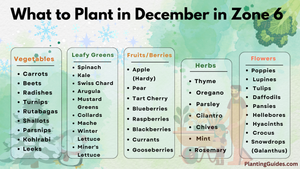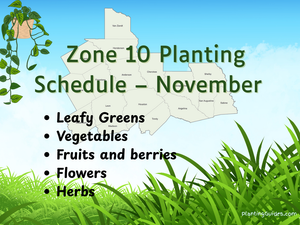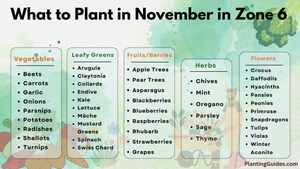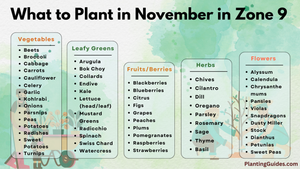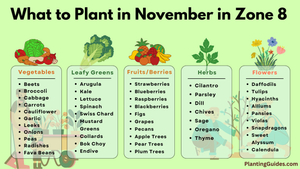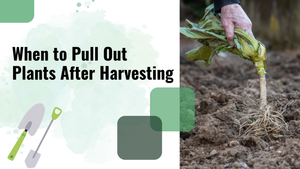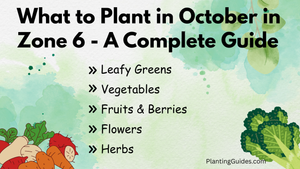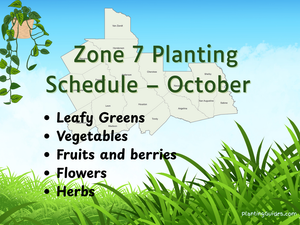Southern California Zone 10 Planting Calendar
By Parvez Akhtar Pasha | Jul 11, 2025
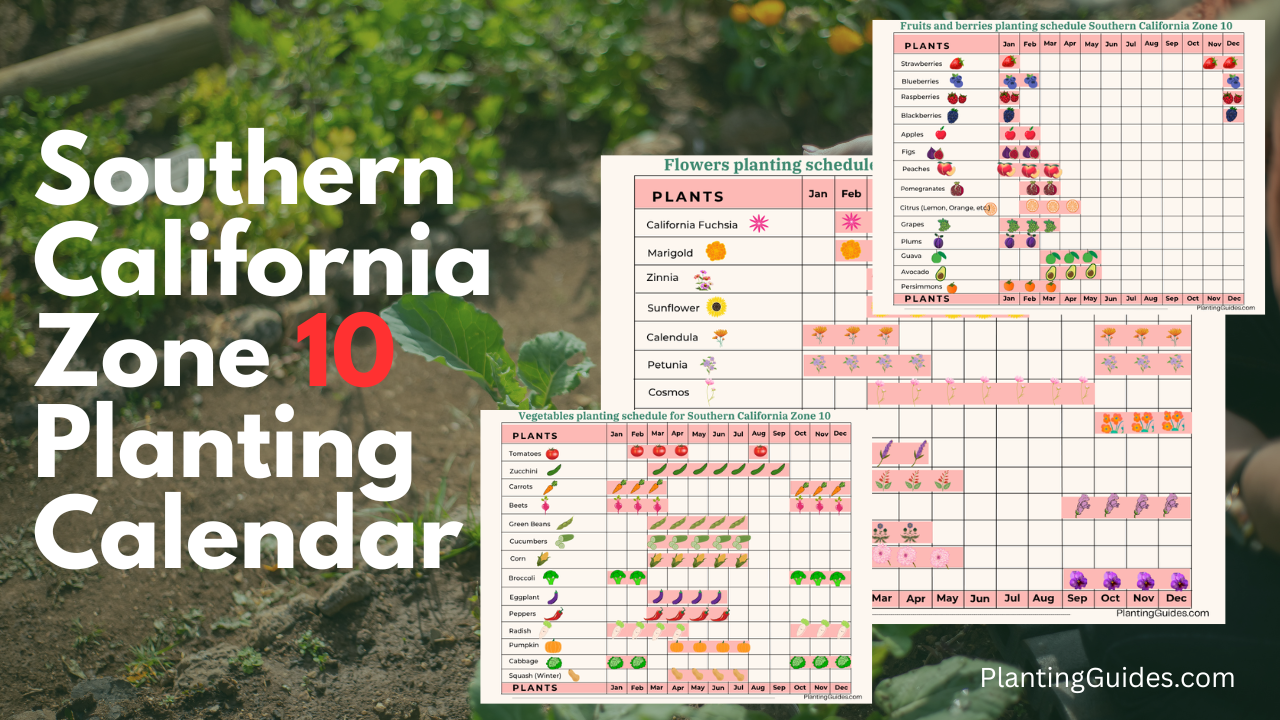
I have spent lots of time to learn about Southern California’s growing conditions, especially in USDA Zone 10. And based on my research I have created a simple planting calendar to help you make your garden awesome.
Zone 10 has a long growing season and very mild winters, which means you can grow many different plants almost all year round. But to get the best results, it’s important to plant right plants at the right time.
To make everything easy to follow, I’ve organized the planting charts into useful categories like:
- Leafy greens
- Vegetables
- Fruits & Berries
- Flowers
- Herbs
So, you can easily find what you need and plant at the perfect time.
Each section includes clear and simple charts showing the best time to plant, how to plant, when to expect harvests or blooms and other useful information.
If you are new to gardening or want a guide for Zone 10, this planting calendar will help you plan your garden with confidence.
In Zone 10, we have to deal with lots of pests. I have created a guideline to get rid of pests with home remedies.
Leafy Greens
Leafy greens are some of the easiest and fastest crops to grow in Southern California, especially in Zone 10. They don’t need much space, grow quickly, and are perfect for salads, sandwiches, and healthy meals.
Most of these greens grow best in cooler months, so plant them from fall to early spring in Zone 10.
| Leafy Green | Best Planting Time | Planting Method | Transplanting Time | First Harvest | Variety Recommendations |
|---|---|---|---|---|---|
| Lettuce | Oct – Feb | Direct seed or transplant | 3–4 weeks after seeding | 30–60 days | Buttercrunch, Romaine, Little Gem |
| Spinach | Oct – Feb | Direct seed | Not recommended | 30–45 days | Bloomsdale, Space, Tyee |
| Kale | Oct – Feb | Direct seed or transplant | 3–4 weeks after seeding | 50–75 days | Lacinato (Dino), Red Russian |
| Swiss Chard | Oct – Mar | Direct seed | Optional at 4 weeks | 50–60 days | Bright Lights, Fordhook Giant |
| Arugula | Oct – Feb | Direct seed | Not needed | 20–40 days | Astro, Roquette |
| Collard Greens | Oct – Mar | Direct seed or transplant | 4–5 weeks after seeding | 60–85 days | Georgia Southern, Vates |
| Mustard Greens | Oct – Feb | Direct seed or transplant | 3–4 weeks after seeding | 30–50 days | Red Giant, Green Wave |
| Mâche (Corn Salad) | Nov – Jan | Direct seed | Not needed | 40–60 days | Vit, Dutch |
Visual Chart:
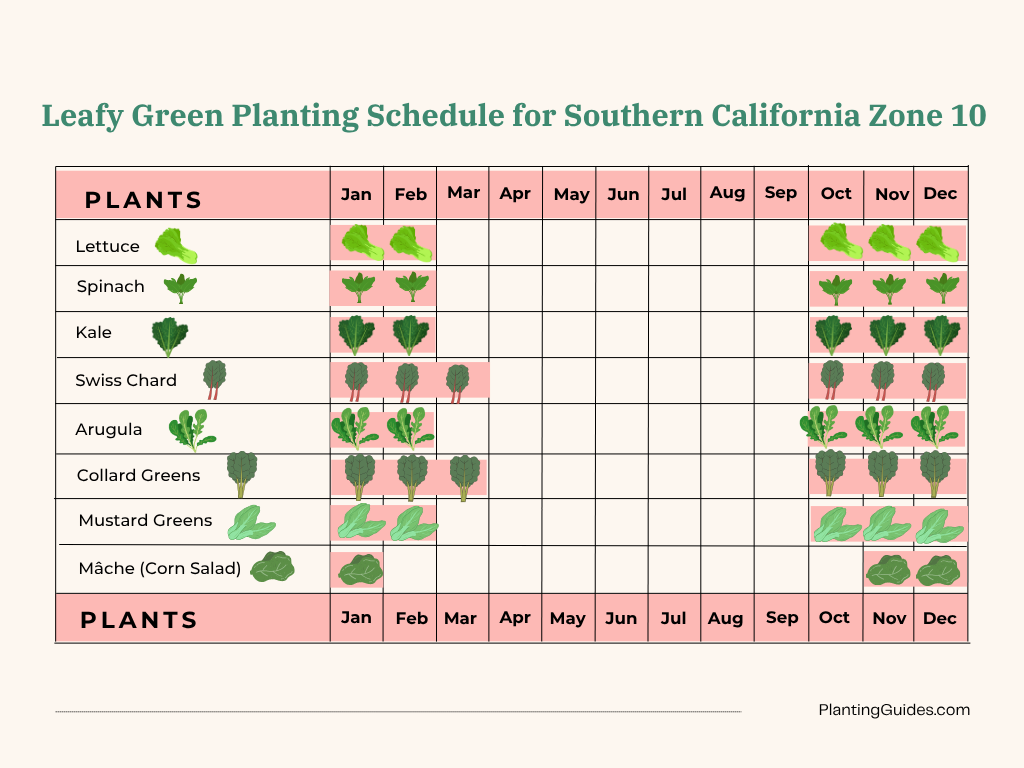
Leafy greens grow best in loose, rich well drained soil. They need some sun and regular watering (but not too much). Also use mulch to help keep moisture in and protect the roots.
Many leafy greens can be harvested more than once, just trim the outer leaves and let the plant keep growing.
These crops don’t like extreme heat, so it’s best to plant them during the cooler months.
Vegetable planting schedule for South California Zone 10
Vegetables grow really well in Southern California because of the mild winters and long warm seasons. In Zone 10, you can plant summer crops early and grow cool-season crops in fall and winter.
Follow the table below to know exactly when and how to plant each vegetable for the best results.
| Vegetable | Best Planting Time | Planting Method | Transplanting Time | First Harvest | Variety Recommendations |
|---|---|---|---|---|---|
| Tomatoes | Feb – Apr, Jul – Aug | Transplant | After last frost or indoor start | 60–90 days | Early Girl, Celebrity, San Marzano |
| Zucchini | Mar – Sep | Direct seed or transplant | 3–4 weeks after seeding | 45–60 days | Black Beauty, Cocozelle |
| Carrots | Oct – Mar | Direct seed | Not needed | 70–80 days | Nantes, Danvers, Little Finger |
| Beets | Oct – Mar | Direct seed | Not needed | 50–70 days | Detroit Dark Red, Chioggia |
| Green Beans | Mar – Jul | Direct seed | Not needed | 50–60 days | Blue Lake, Provider |
| Cucumbers | Mar – Jul | Direct seed or transplant | 3–4 weeks after seeding | 50–70 days | Marketmore, Lemon, Straight Eight |
| Corn | Mar – Jul | Direct seed | Not needed | 75–100 days | Golden Bantam, Honey Select |
| Broccoli | Oct – Feb | Transplant | 4–6 weeks after seeding | 60–100 days | Calabrese, Waltham 29 |
| Eggplant | Mar – Jun | Transplant | 6–8 weeks after seeding | 70–90 days | Black Beauty, Rosa Bianca |
| Peppers | Mar – Jun | Transplant | 6–8 weeks after seeding | 60–90 days | California Wonder, Jalapeño |
| Radish | Oct – Apr | Direct seed | Not needed | 25–40 days | Cherry Belle, French Breakfast |
| Pumpkin | Apr – Jul | Direct seed | Not needed | 90–120 days | Small Sugar, Jack Be Little |
| Cabbage | Oct – Feb | Transplant | 4–6 weeks after seeding | 70–110 days | Green Acre, Savoy |
| Squash (Winter) | Apr – Jul | Direct seed | Not needed | 90–110 days | Butternut, Delicata |
Visual Chart:
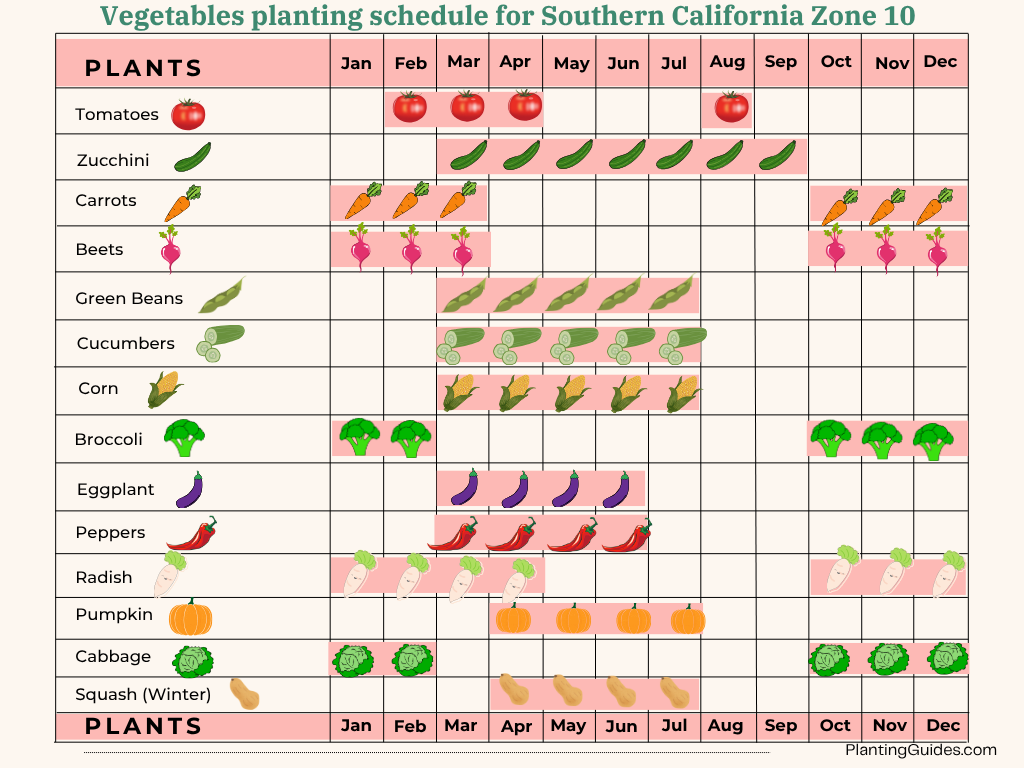
For best results, plant vegetables in well-draining, compost-rich soil and choose a spot that gets at least 6–8 hours of direct sunlight daily.
Always check soil temperature before planting, most vegetables germinate best when soil stays between 60°F and 85°F for healthy and fast growth.
Tired of weeds? check this: how to get rid of weeds in your garden
Fruits & Berries
Zone 10 in Southern California is great for growing all kinds of fruits and berries. The mild winters and long warm seasons make it perfect for growing low-chill and subtropical fruits.
Now, follow the table below that will help you plant fruits and berries at the right time and pick the varieties that grow best in Zone 10.
| Fruit / Berry | Best Planting Time | Planting Method | First Harvest | Variety Recommendations |
|---|---|---|---|---|
| Strawberries | Nov – Jan | Transplant (bare-root) | 60–90 days | Chandler, Seascape, Albion |
| Blueberries | Dec – Feb | Transplant (acidic soil) | 1–2 years | Misty, Sunshine Blue, Sharpblue |
| Raspberries | Dec – Jan | Bare-root canes | 1 year | Fall Gold, Heritage, Baba Red |
| Blackberries | Dec – Jan | Bare-root canes | 1 year | Triple Crown, Natchez, Prime-Ark 45 |
| Apples | Jan – Feb | Bare-root or container | 2–3 years | Anna, Dorsett Golden, Fuji (low-chill) |
| Figs | Jan – Mar | Transplant (potted or bare-root) | 1–2 years | Black Mission, Brown Turkey, Kadota |
| Peaches | Jan – Feb | Bare-root or container | 2–3 years | Tropic Snow, Mid Pride, Eva’s Pride |
| Pomegranates | Feb – Mar | Container or bare-root | 1–2 years | Wonderful, Parfianka, Eversweet |
| Citrus (Lemon, Orange, etc.) | Feb – Apr | Container or nursery stock | 1–2 years | Improved Meyer, Valencia, Cara Cara |
| Grapes | Jan – Mar | Bare-root or container | 2–3 years | Flame Seedless, Thompson, Concord |
| Plums | Jan – Feb | Bare-root or container | 2–3 years | Beauty, Santa Rosa, Burgundy (low-chill) |
| Guava | Mar – May | Potted plant | 1–2 years | Mexican Cream, Tropical Pink |
| Avocado | Mar – May | Grafted nursery tree | 2–4 years | Hass, Fuerte, Bacon |
| Persimmons | Jan – Mar | Bare-root or container | 2–3 years | Fuyu (non-astringent), Hachiya |
Visual Chart:
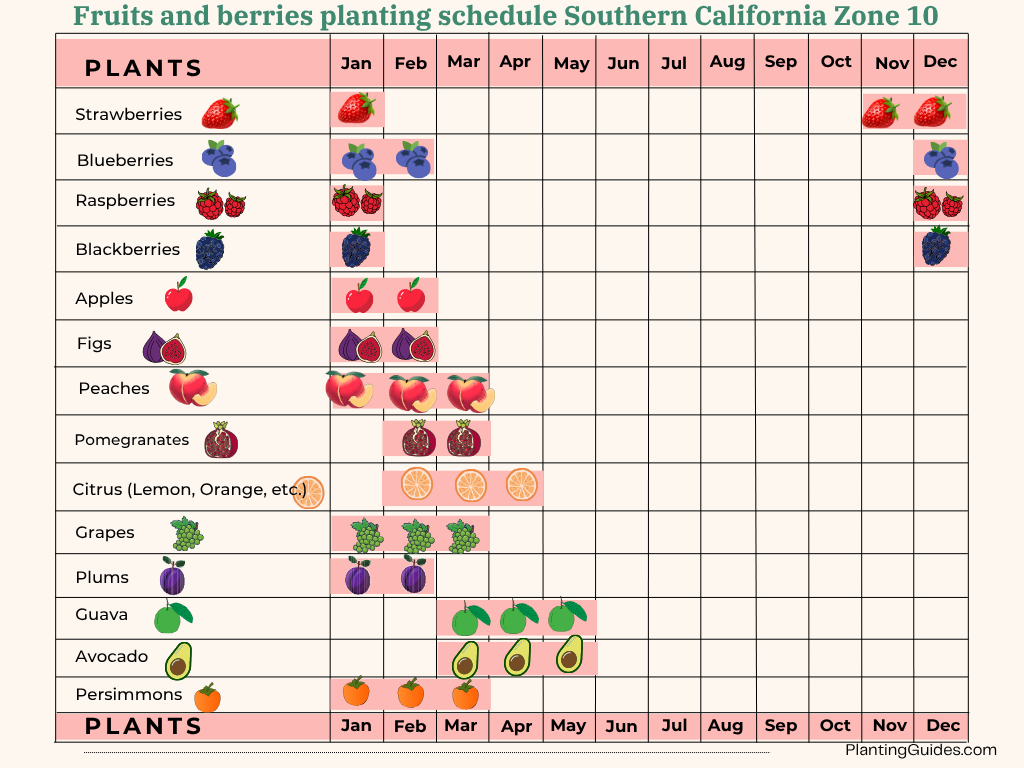
Pick fruit trees that don’t need much cold weather, plant them where they get lots of sun, and water them well in the first year.
Most trees take 1 to 3 years to give you fruit, but trust me the wait is worth it.
Flowers
Flowers add beauty, color, and attract pollinators ( helpful insects ) to your garden. In Southern California’s Zone 10, you can grow flowers that bloom nearly all year.
The below table helps you know when to plant, how to plant, and when to expect that first bloom.
| Flower Name | Best Planting Time | Planting Method | Transplanting Time | First Bloom | Perennial or Annual |
|---|---|---|---|---|---|
| California Fuchsia | Feb – Apr | Transplant | 6–8 weeks after seeding | Mid to Late Summer | Perennial |
| Marigold | Feb – Sep | Direct seed or transplant | 3–4 weeks after seeding | 50–70 days | Annual |
| Zinnia | Mar – Aug | Direct seed | Not needed | 60–70 days | Annual |
| Sunflower | Mar – Jul | Direct seed | Not needed | 60–90 days | Annual |
| Calendula | Oct – Mar | Direct seed or transplant | 3–4 weeks after seeding | 60–80 days | Annual |
| Petunia | Oct – Apr | Transplant | 4–6 weeks after seeding | 70–100 days | Annual or Tender Perennial |
| Cosmos | Mar – Sep | Direct seed | Not needed | 70–100 days | Annual |
| Nasturtium | Oct – Feb | Direct seed | Not needed | 50–60 days | Annual |
| Lavender | Feb – Apr | Transplant | 6–8 weeks after seeding | Late spring – early summer | Perennial |
| Salvia | Mar – May | Transplant | 6 weeks after seeding | Late spring – summer | Perennial |
| Snapdragons | Sep – Jan | Transplant | 6–8 weeks after seeding | 70–90 days | Annual (can reseed) |
| Monkey Flower | Feb – Apr | Transplant | 6 weeks after seeding | Late Spring – Early Summer | Perennial |
| Dahlias | Mar – May | Tubers or Transplant | When soil warms, 6–8 weeks indoors if seeding | 60–90 days | Tender Perennial (grown as annual) |
| Pansies | Sep – Jan | Transplant | 6–8 weeks after seeding | 70–90 days | Annual (cool-season) |
Visual Chart:
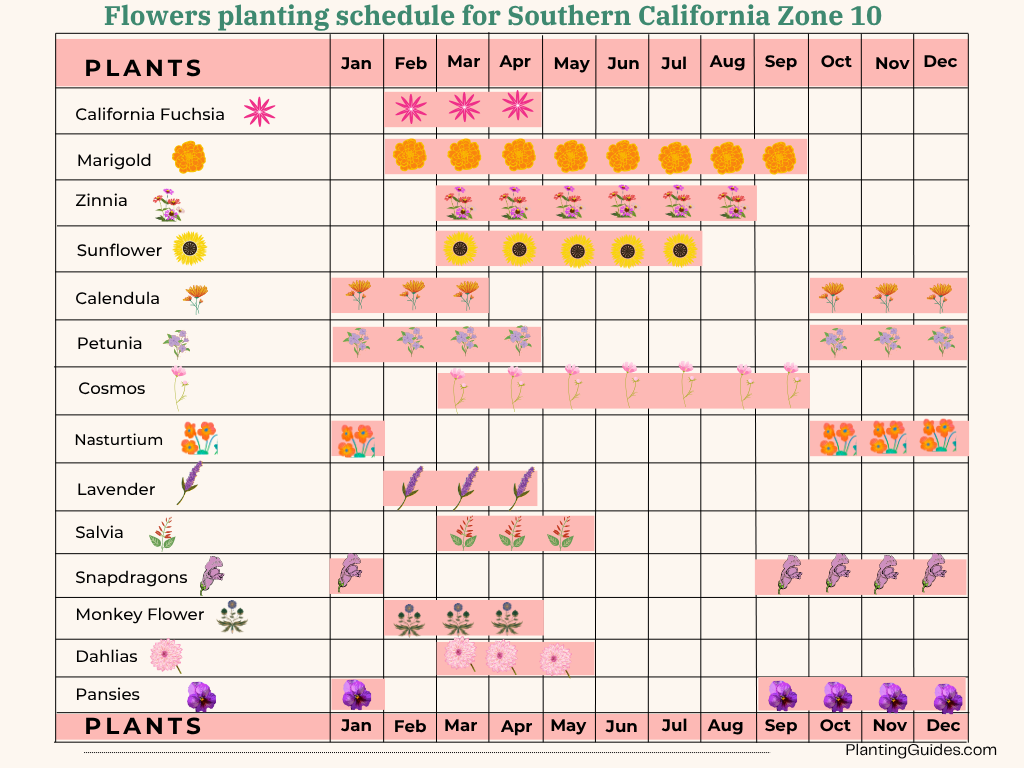
Most flowers in Zone 10 grow best with full sun, well-drained soil, and regular watering, especially during hot months.
Annual flowers grow and bloom quickly, but you’ll need to plant them again each year. Perennials take more time to grow, but they come back every year.
Use mulch to keep the soil moist, block weeds, and keep the roots cool in the heat.
Herbs
If you live in Southern California, you’re lucky, herbs grow really well here. Most herbs love the sun and don’t need a lot of care. You can grow them in pots, in garden beds, or even on a balcony.
This table will help you know when and how to plant herbs for the best harvests.
| Herb Name | Best Planting Time | Planting Method | Transplanting Time | First Harvest | Variety Recommendations |
|---|---|---|---|---|---|
| Basil | Mar – Sep | Direct seed or transplant | 3–4 weeks after seeding | 30–60 days | Genovese, Thai, Lemon Basil |
| Cilantro | Oct – Feb | Direct seed | Not recommended | 30–50 days | Slow Bolt, Santo |
| Parsley | Oct – Mar | Direct seed or transplant | 4–5 weeks after seeding | 70–90 days | Italian Flat Leaf, Curled Moss |
| Oregano | Mar – May | Transplant | 3–4 weeks after rooting | 60–90 days | Greek, Italian |
| Thyme | Mar – May | Transplant | 3–4 weeks after rooting | 60–90 days | English Thyme, Lemon Thyme |
| Mint | Mar – May | Transplant or division | Right away if transplanted | 30–60 days | Spearmint, Peppermint, Chocolate |
| Chives | Oct – Mar | Direct seed or transplant | 4–6 weeks after seeding | 60–90 days | Common Chives, Garlic Chives |
| Dill | Oct – Feb | Direct seed | Not needed | 40–60 days | Bouquet, Fernleaf |
| Sage | Mar – May | Transplant | 3–4 weeks after rooting | 75–90 days | Common Sage, Purple Sage |
| Rosemary | Feb – Apr | Transplant or cutting | 4–6 weeks after rooting | 80–100 days | Tuscan Blue, Arp, Prostratus |
| Lemongrass | Mar – Jun | Division or transplant | 4–6 weeks after division | 100–120 days | East Indian, West Indian |
Visual Chart:
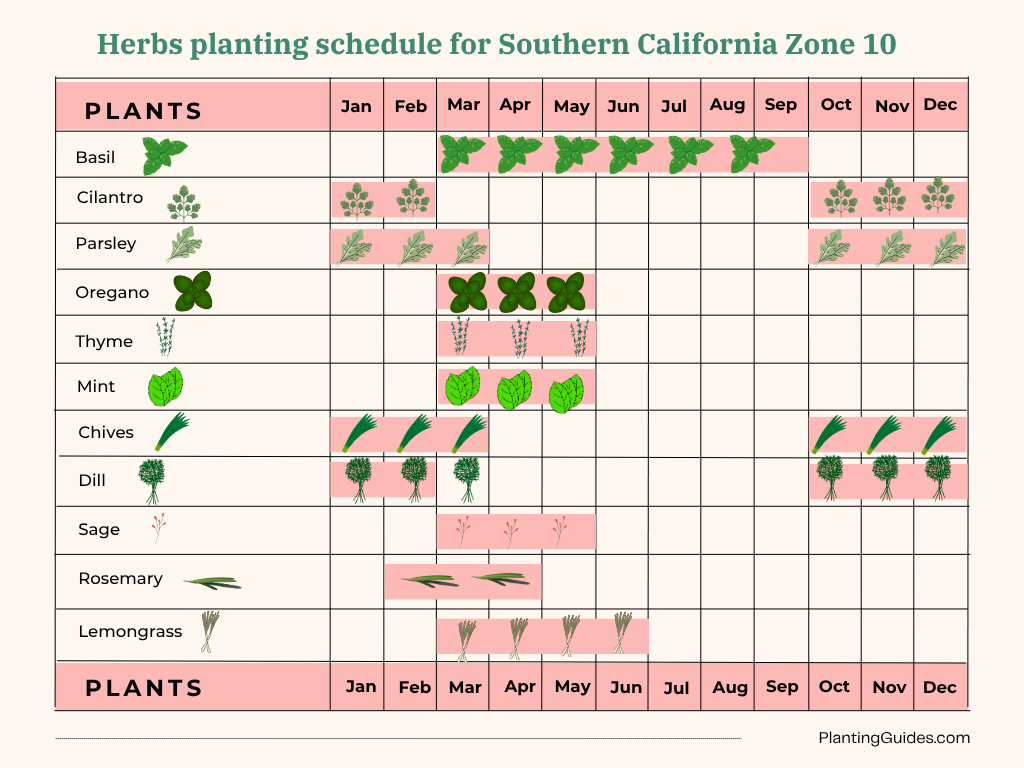
Most herbs keep growing if you cut them regularly. Just trim a little often, it helps them grow better, bushy and stay fresh.
Water early in the day and avoid overwatering, especially in pots. Mint, oregano, and rosemary are easy to grow and don’t need much attention, so they’re perfect for new gardeners.
